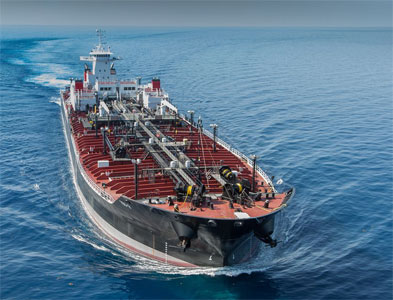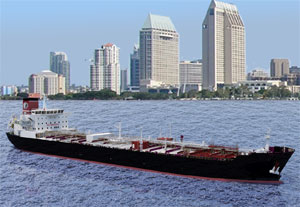The U.S.-flag fleet is set to grow, fueled in part by the growing domestic petroleum market.
U.S. oil production is expected to outstrip oil imports in 2014, according to the U.S. Energy Information Administration. That’s led to construction of vessels that meet Jones Act requirements for domestic shipping.
In May, American Petroleum Tankers (APT), based in Plymouth Meeting, Pa., announced the company had ordered four petroleum product tankers that will become part of the Jones Act fleet.
The surge in domestic vessel production is an indication of the health of the domestic fleet, according to a statement from the American Maritime Partnership (AMP), a domestic shipping trade group, to Professional Mariner.
“American Petroleum Tankers’ order of four new vessels for the domestic trades is proof positive that American companies continue to make the kinds of investments that will ensure the safe and efficient movement of energy cargoes along our coastlines. These vessels will take ‘state-of-the-art’ to a whole new level and keep America at the forefront of maritime innovation,” the AMP statement said.
 |
|
Courtesy Crowley Maritime |
|
The bow of the Crowley Maritime ATB Liberty and 750-3, which was delivered in May. |
Meanwhile, Crowley Maritime, based in Jacksonville, Fla., finished a 10-year building program for its petroleum product carriers.
The U.S.-flag fleet also got a boost when Maersk Line Ltd. purchased eight containerships that it will reflag to qualify for U.S. government and military cargo programs.
Overall, there are more than 40,000 vessels in the Jones Act fleet, according to AMP.
The APT tankers are on order at the General Dynamics Nassco shipyard in San Diego. An affiliate company of APT has contracted with Nassco for four 50,000-dwt petroleum product carriers with a capacity of 330,000 barrels. The contract includes an option for an additional four carriers.
Construction of the first tanker is scheduled to begin in the third quarter of 2014, with deliveries through 2016. Nassco previously built five product carriers for APT.
“This investment demonstrates our continued commitment to building and operating ships for the U.S. Jones Act trade,” Rob Kurz, chief executive of APT, said in announcing the building program. “We are proud to bring new U.S.-built tonnage into the market at this exciting time, helping our country achieve its long-standing strategic objective of energy independence.”
In May, Crowley Maritime took delivery of the tug Liberty and barge 750-3, the 17th articulated tug-barge in the company’s $1 billion, 10-year ATB building program. Crowley has also acquired two 330,000-bbl product tankers for its petroleum business.
Overall, the company has about 600 seagoing billets in the 24 vessels in its petroleum fleet, said Rob Grune, senior vice president of Crowley Petroleum Services. The company upgraded its petroleum fleet in response to demand from customers, the six major oil production companies.
“Our growth is directly tied to them, we’re not overly speculative in our growth and we don’t build vessels on spec,” Grune said in an interview. “We build to meet our customers’ needs and demand.”
During Crowley’s building program, the newbuilds replaced some older vessels, but overall there’s been a net increase in jobs for mariners.
“We have been hiring people throughout the whole process over the past 10 years and we continue to hire people,” Grune said.
Maersk Line is reflagging eight containerships, replacing eight vessels that will leave the U.S. fleet. The new ships will enter Maersk Line’s Middle East service and join the Maritime Security Program and the Voluntary Intermodal Sealift Agreement, John Reinhart, Maersk Line’s chief executive, said in a press release. Overall, Maersk Line has 56 U.S. flag vessels and employs about 1,200 American seafarers.

